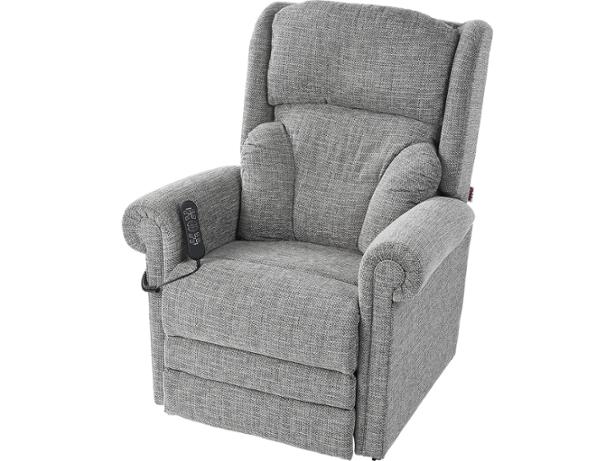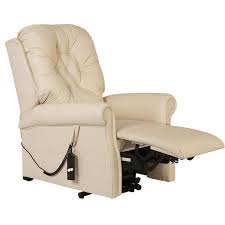Choosing the right Riser Recliner Chair
Finding the best riser recliner chair involves a lot of questions.
Are the chairs comfortable? Are they easy to use? Are they affordable?
A good riser recliner chair should feel comfortable, supportive, and secure.
A ‘wrong’ sitting position can become uncomfortable quite quickly, potentially making it harder to get out of the chair again.
If you’re unable to find a comfortable or correct sitting position in your current sofa or armchair, it might be worth investing in a Riser Recliner Chair.
There are many different styles of Chairs available, and finding the right one for you will depend on a number of factors including your height and body shape.
Factors to consider:
- Seat height:A higher seat will make it easier to get in and out of the chair, but if too high, it will put too much pressure on the back of your thighs and your feet won’t touch the floor, making it more uncomfortable when sitting.
- Seat depth:This needs to be sufficient to support the full length of your thighs, but not be so deep that you have to lean back. If the chair is too deep, a comfortable and simple way to shorten the seat is to add a cushion behind your back.
- The height of the armrests:these should allow the arms to be rested without raising or dropping your shoulders.
- A Riser recliner chair incorporate elements to help people stand up and sit down, to recline (even to a lying position), or both. Three main types are available and some incorporate features for pressure relief, useful for people who spend a long time sitting in one position.
- Riser chairs: these can be manually operated or electrically powered, and have a seat base or structure that rises or falls, but note that manual risers are less suited to people with poor balance.
- Recliner chairs: these feature a reclining backrest and a rising leg rest, and can also be manually operated or electrically powered; some will recline to a fully flat position.
- Riser recliner chairs: combine the features of both. You can buy these ‘off the peg’ in a standard size, or you can get one custom made.
Getting in to and out of a chair
For the safest ways to get in and out of a chair, remember the following tips.
- Sitting down, always feel the chair or seat on the back of your knees before lowering into the seat.
- Be sure to reach the arms and lower yourself down gently and evenly.
- Standing up, move forward so that your feet are directly under or behind your knees.
- Make a wide base with your feet.
Riser recliner chairs: movement options All riser recliner chairs follow a similar movement cycle, from standing to upright (sitting) and then back to full recline with leg elevation, and back again. It’s also possible to buy chairs that offer slightly different movement options.
Single motor Reclining chairs with a single motor provide one combined riser and recline action. On recline, the footrest automatically rises to support your legs – normally to an angle of 45 degrees, as this is considered comfortable for watching TV.7
Dual-motor riser recliner chairs with two motors (dual-motor chairs) let you operate the back and footrest independently. For example, you can sit upright and choose not to have your legs elevated. You can also choose to recline the chair fully so it becomes flat like a bed, although the angle of recline does vary across models.
Tilt in space This is a reclining action where, instead of the backrest separating from the seat (and so creating a gap), the whole chair simply tips backwards while maintaining a seating position. Legs can be elevated above your hips, so it’s useful for those with poor leg circulation or oedema (leg swelling)
Wall hugging If you’re short on space, this is a good option. Instead of reclining backwards, the wall hugger moves forward as it reclines. Wall-hugging riser recliners do need more space in front.
Riser recliner chair controls You can change the position of your riser recliner chair between sitting, standing and reclining, using hand-operated electric controls.
Single Motor chairs tend to have simpler control panels, often with just two buttons for ‘rise’ or ‘recline’.
Dual-motor versions typically have four or five buttons, because they have more functions (independent footstool and backrest movement).

Single Motor chairs tend to have simpler control panels, often with just two buttons for ‘rise’ or ‘recline’.
With a Single Motor Chair when the footrest is raised the Back will recline automatically. Perfect if rest or quick sleep is required.
Not ideal if reading a book or watching TV is a prefered option.

Riser recliner chairs with two motors (dual-motor chairs) let you operate the back and footrest independently. For example, you can sit upright and choose not to have your legs elevated. You can also choose to recline the chair fully so it becomes flat like a bed, although the angle of recline does vary across models.

Wall hugging If you’re short on space, this is a good option. Instead of reclining backward, the wall hugger moves forward as it reclines. Wall-hugging riser recliners do need more space in front.
Wall hugger recliners can be positioned mere inches from the wall. Users sit on the chair, press a button, or pull a lever, and a gliding mechanism under the seat pushes the bottom half of the chair forwards, so the back of the chair never gets closer to the wall.
Wall hugger recliners are therefore ideal for a bedroom, smaller living room, or if you need the chair to join an already busy living space.

